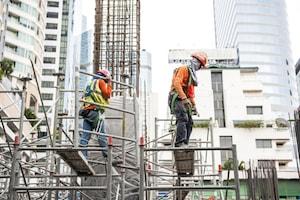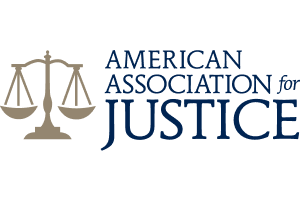Scaffold Injuries

Although Daniel Palmer-Jones of Great Britain is credited with inventing the modern metal scaffold in the early 1920s, the scaffold has been around for a very long time. In fact, the scaffold was used by the Egyptians when building the pyramids at Giza. In simple terms, a scaffold is a temporary fixed structure that allows a construction worker to climb up on it to perform work in high places without having to stand on a wobbly ladder or be dangled from a line. Regardless of who claims the credit, the scaffold is a great invention and a fine tool – so long as it is sturdy and well-built. When a scaffold is not sturdy and well-built, it can fall like a house of cards, causing construction workers to fall with it.
Scaffolds are as strong as their “weakest link” – if one supporting component part fails, the entire structure can collapse. Consequently, the use of scaffolds is one of the most highly regulated activities on any construction site. The Department of Labor and Industries [DLI] was given the authority by the Washington State Legislature to adopt and enforce safety and health regulations on every construction site in the state. The Washington Administrative Code, where all safety and health regulations are published, contains an entire chapter of scaffold regulations, including 86 distinct sections that address everything from what a scaffold can be made from to how a scaffold can be assembled to who is authorized to assemble a scaffold. WAC 296-874-100 through WAC 296-874-100.
Because of the complexity of the scaffold regulations, many general contractors and subcontractors simply rent scaffolding from a rental company and have the rental company’s employees assemble the scaffold. If not done correctly, the rental company will have liability for injuries sustained by construction workers who are assigned to work on the scaffold. Moreover, the contractor who hired the rental company will likely have liability if it did not inspect the scaffold and make sure it was safe before sending workers up on the scaffold.
While most scaffold injuries involve falls, employers are not required to provide fall protection – such as lanyards and harnesses – to workers assigned to work on a scaffold so long as the scaffold is equipped with guardrails. WAC 296-874-20052. Even though most scaffolds are equipped with guardrails, workers still fall when the decking surface they walk on is loose and shifts (it is required to be secured), when the load placed on a scaffold exceeds the scaffold’s maximum rated tolerance and the scaffold comes apart, or when the workers slip and fall while climbing ladders from one scaffold level to another.
Other common injuries happen when those working below a scaffold are struck by objects dropped by construction workers who are up on the scaffold. WAC 296-874-20066. These injuries are addressed in the Falling Debris, Materials or Objects article on this website.
Given that any unsafe condition or defect in the scaffold at the time of the construction workers’ injury must be established to prove a personal injury claim, it is important that photographs and other documentary evidence concerning a failed scaffolding component be gathered immediately after an injury occurs, if at all possible. For these reasons, any construction worker injured due to a scaffold failure should contact an experienced construction injury lawyer as soon as possible.
Scaffold-related injuries can happen on construction sites anywhere in Washington State — in Seattle, Tacoma, Olympia, Bellingham, Marysville, Everett, Centralia, Longview, Vancouver, Ellensburg, Wenatchee, Yakima, Richland, Walla Walla, Spokane, and all points in between. The lawyers at Kraft Davies Olsson PLLC have successfully handled several scaffolding failure cases for injured construction workers. If you or a loved one has suffered a scaffold-related injury while working at a construction site, please call us at 206.624.8844 for a free consultation.







